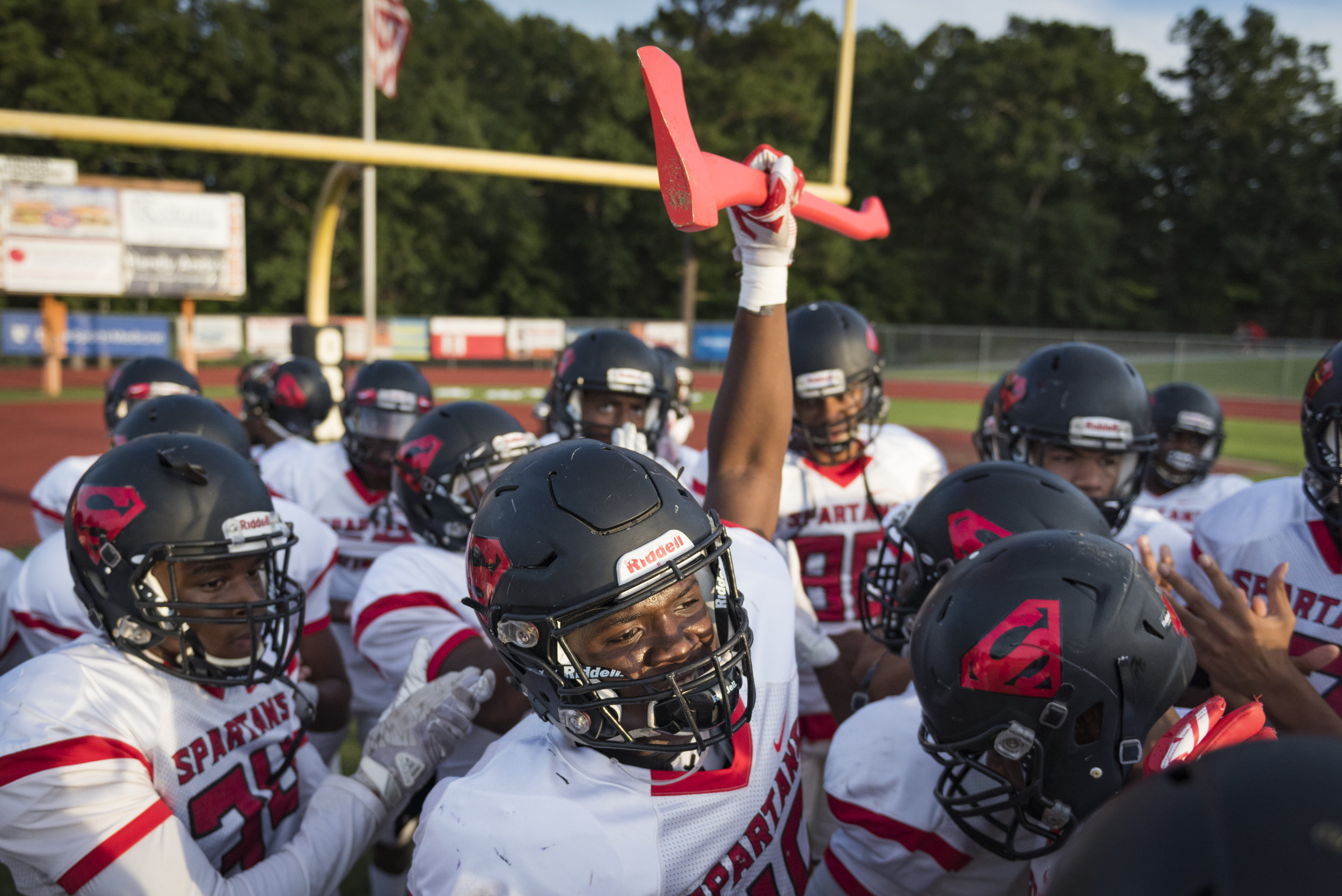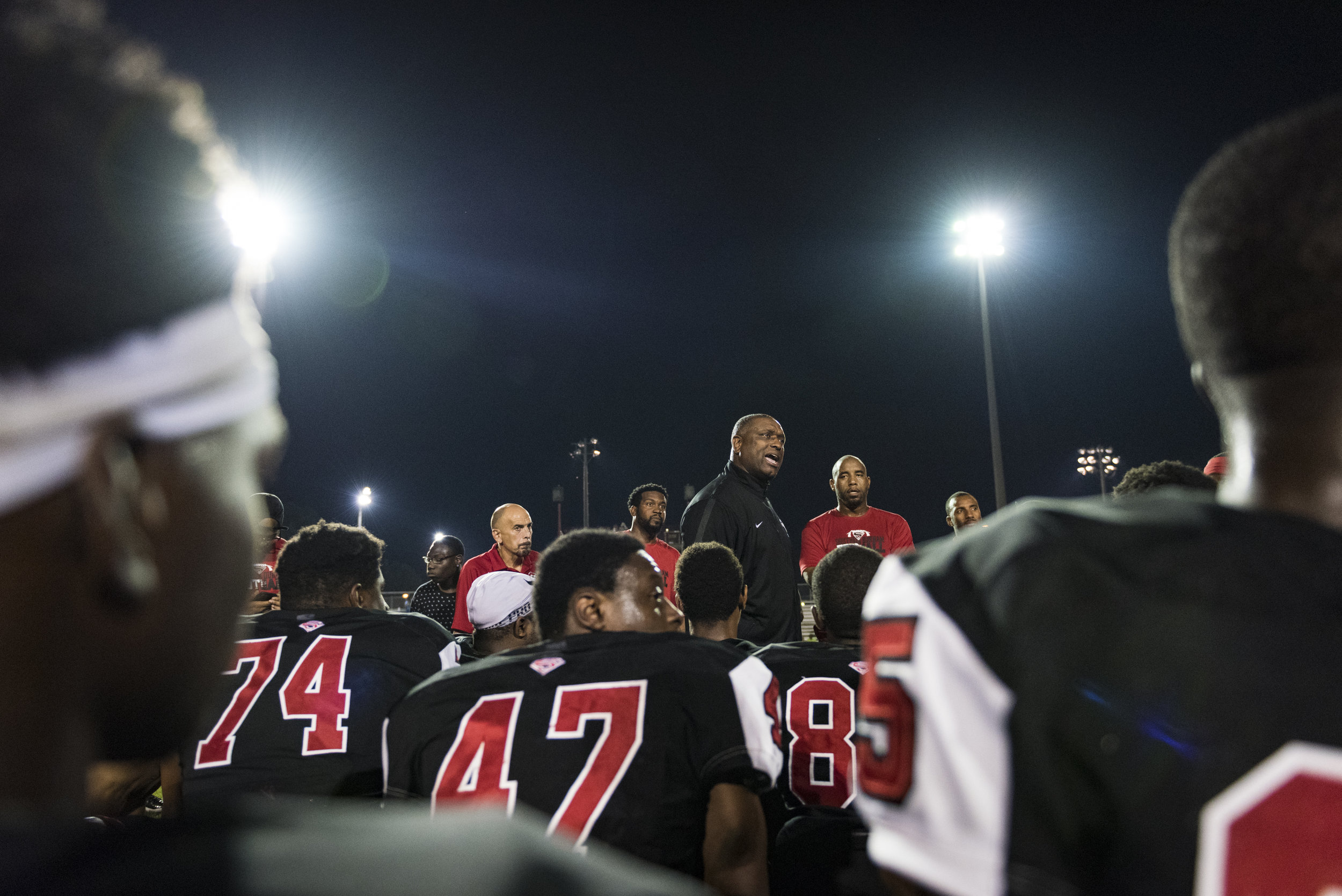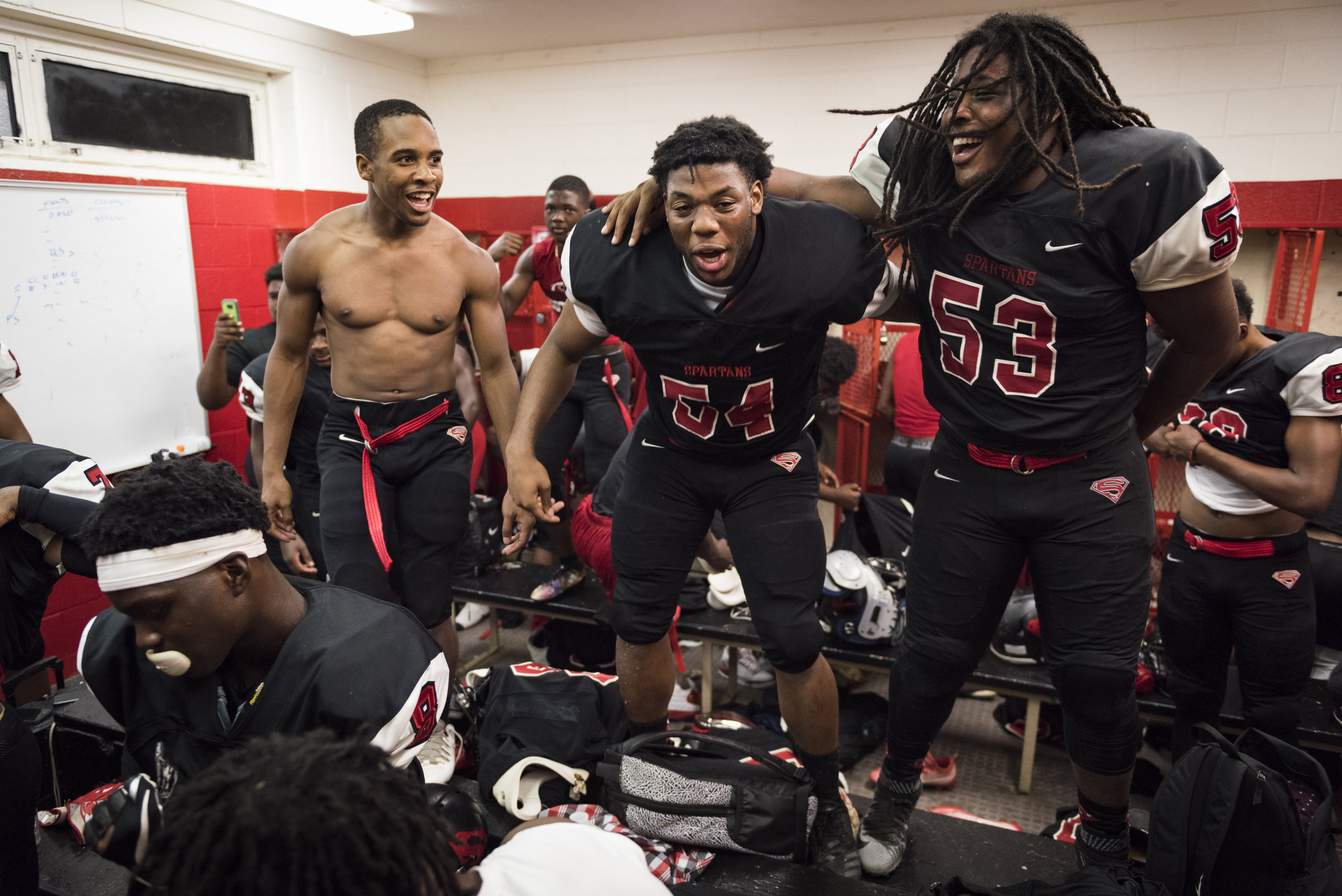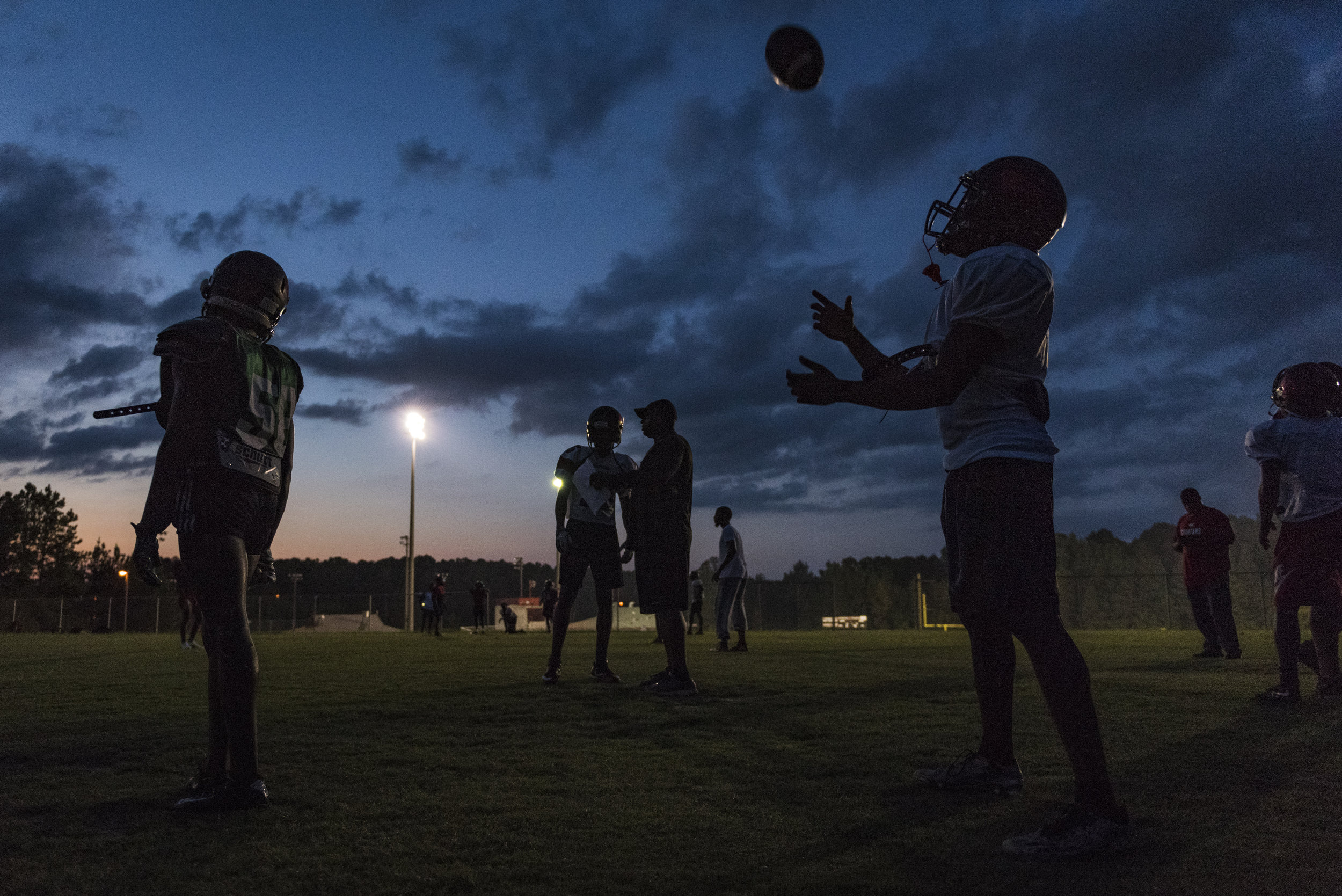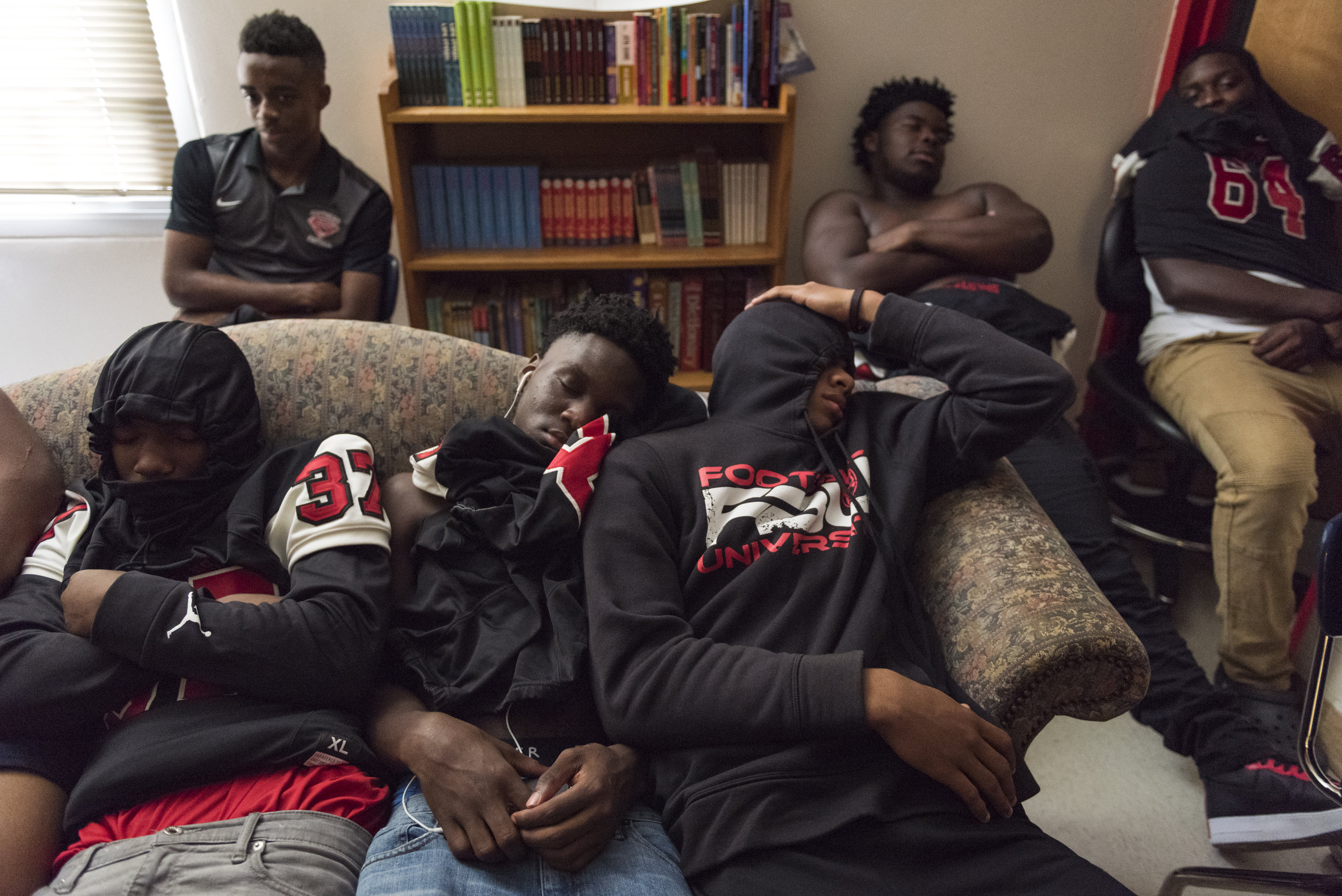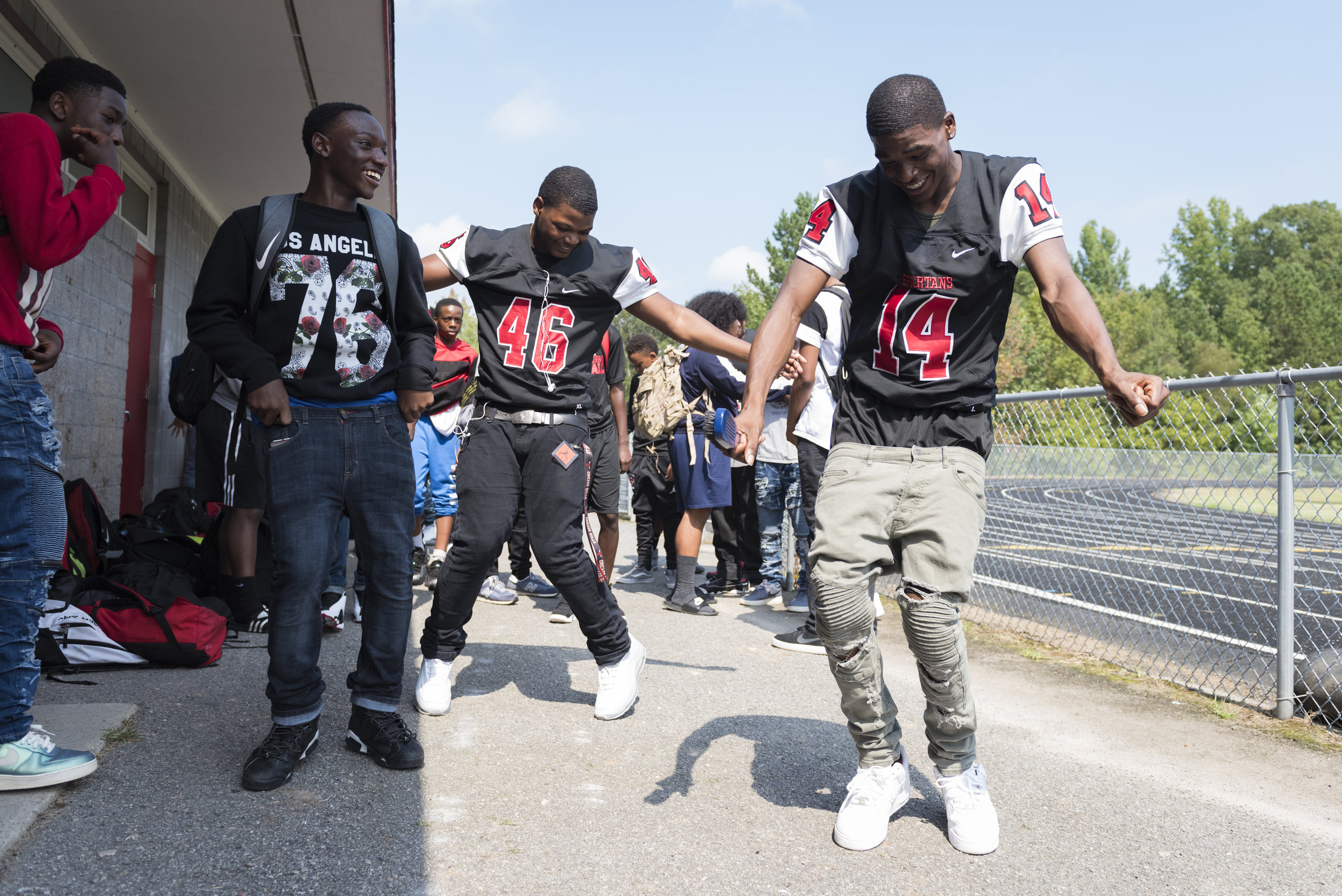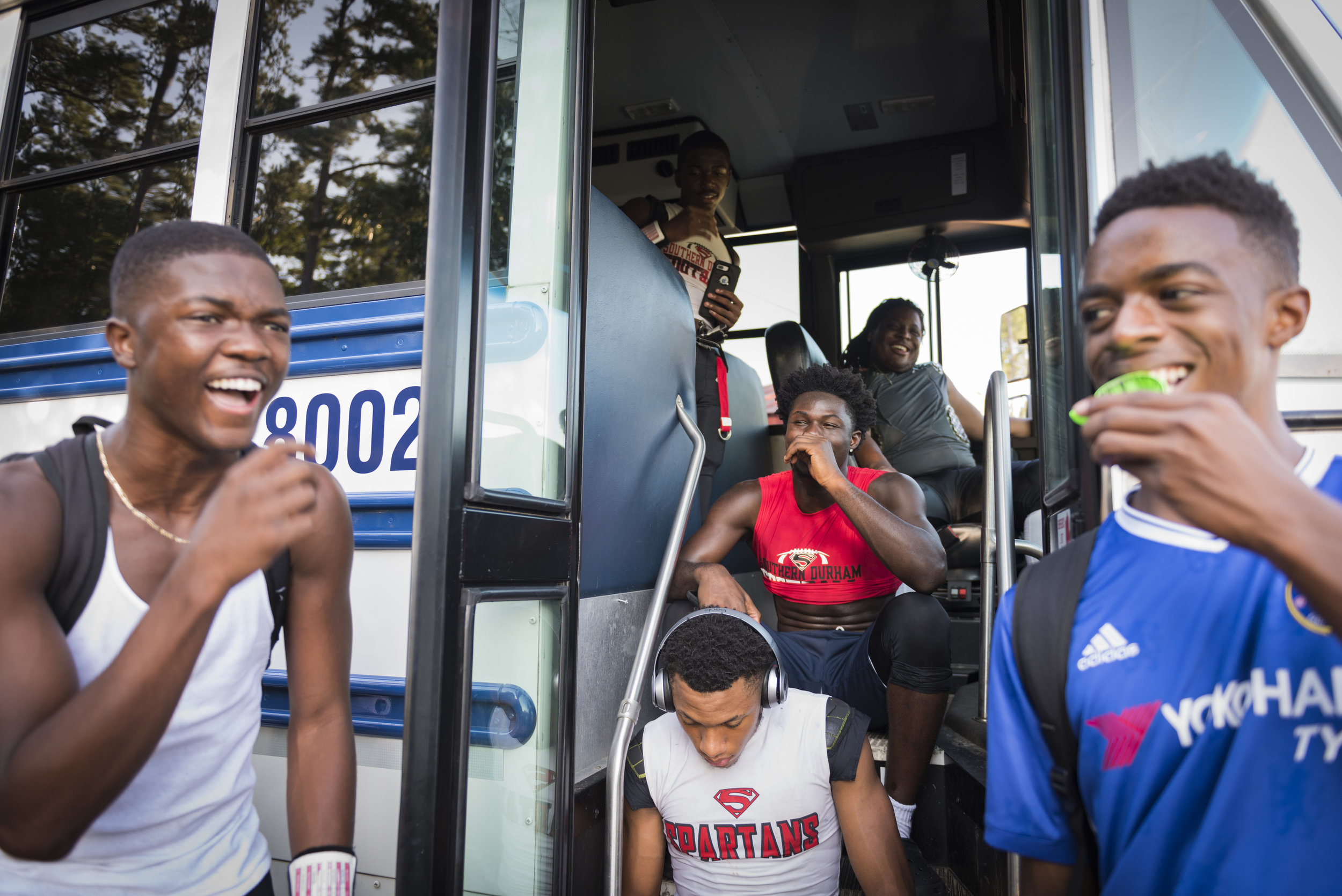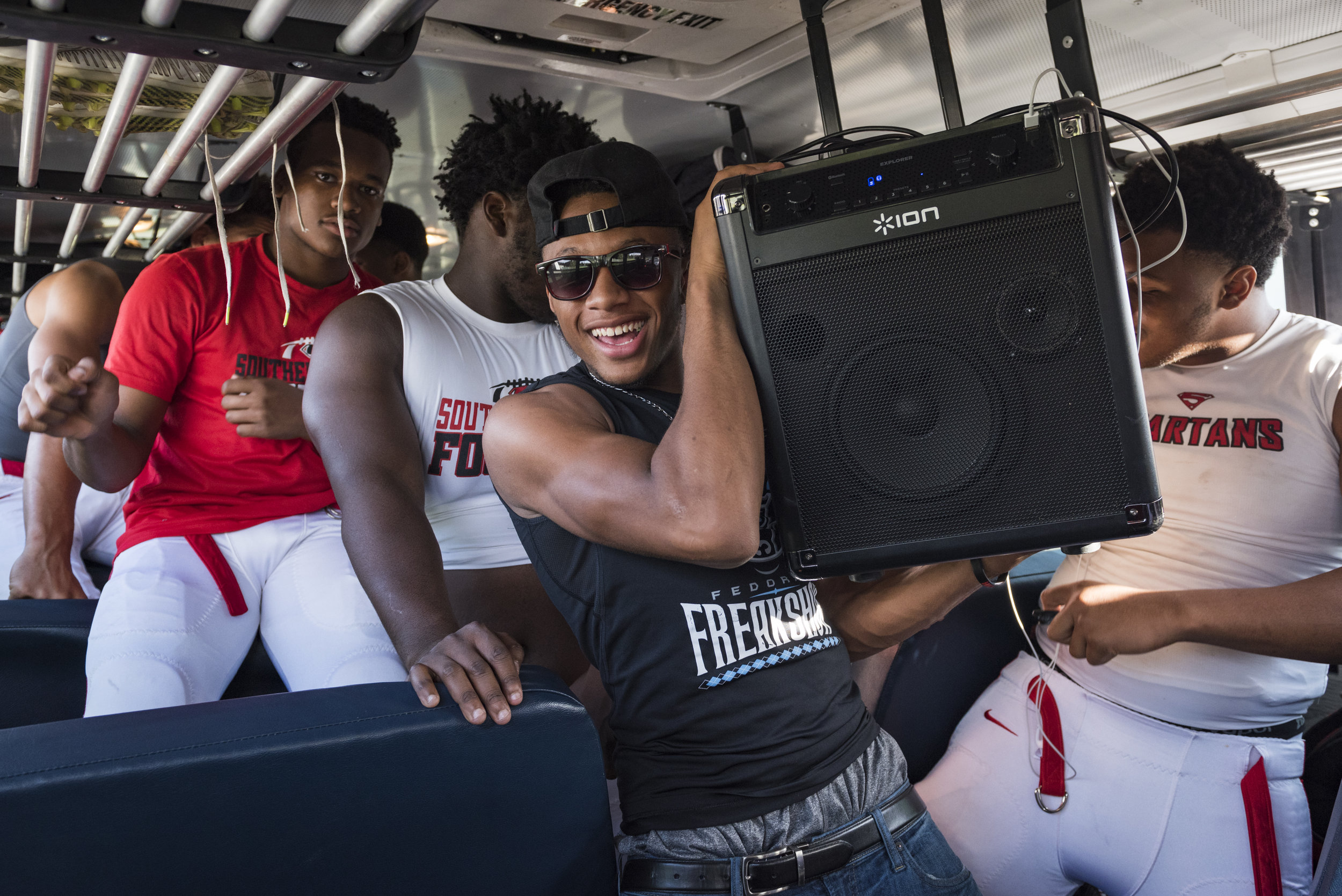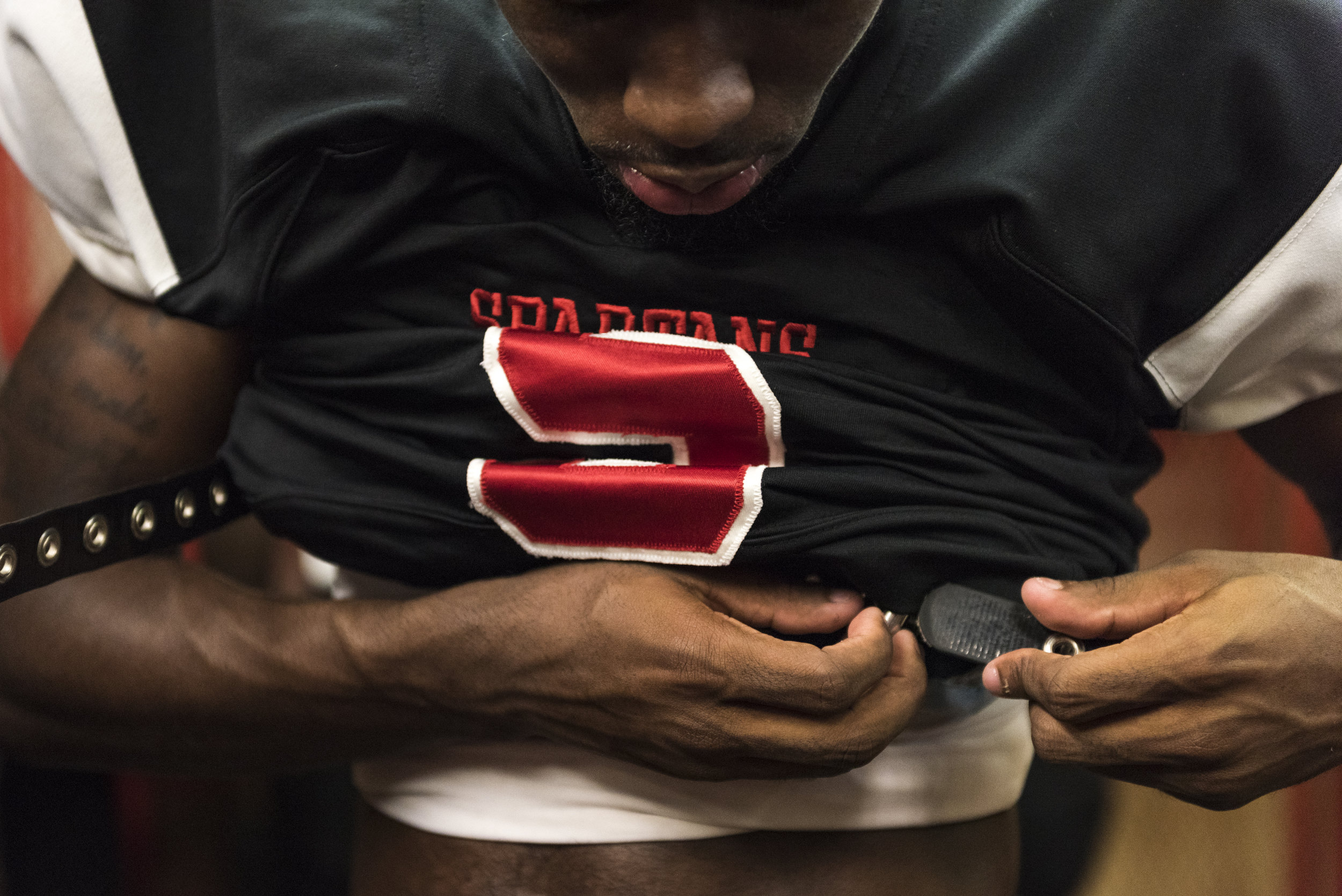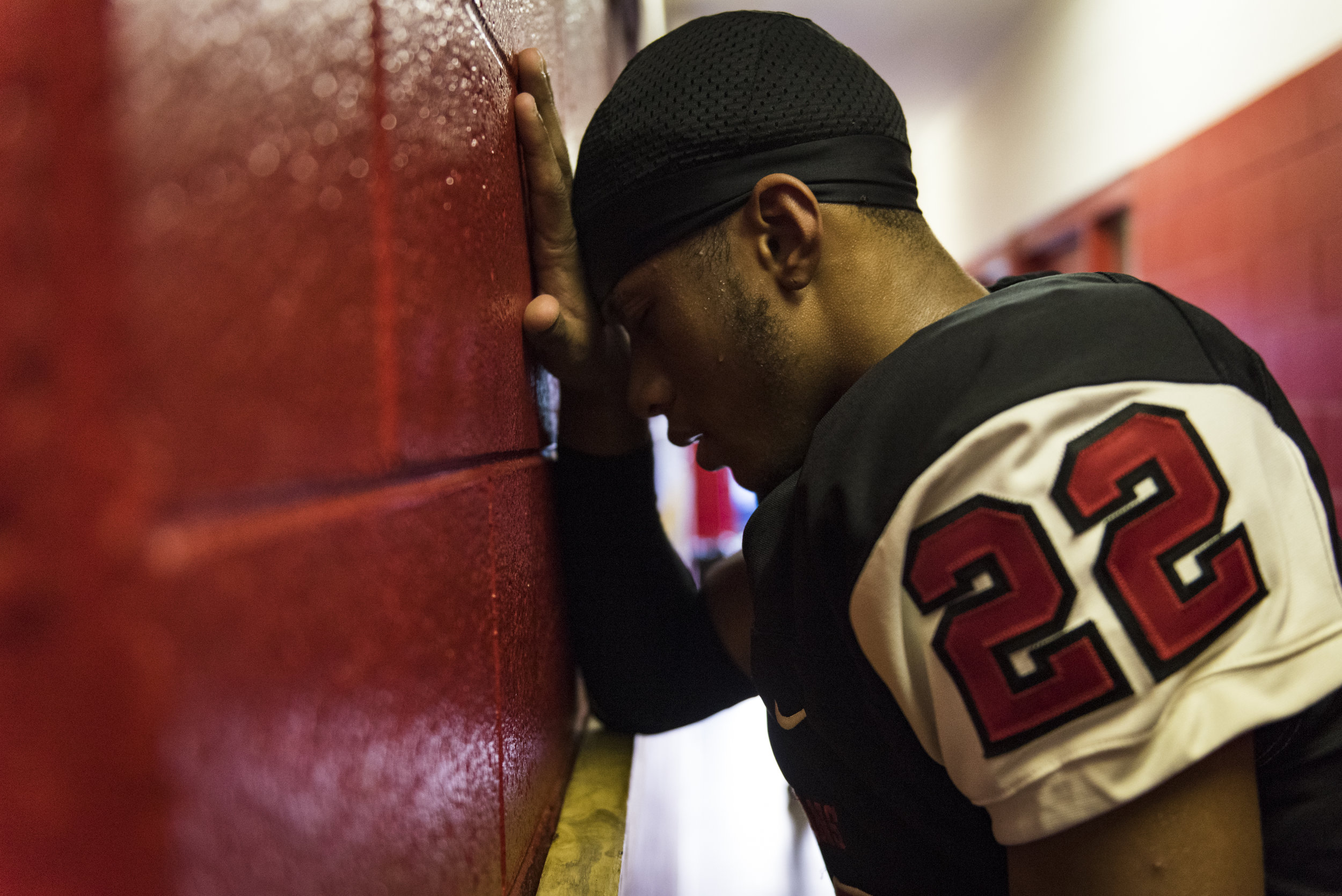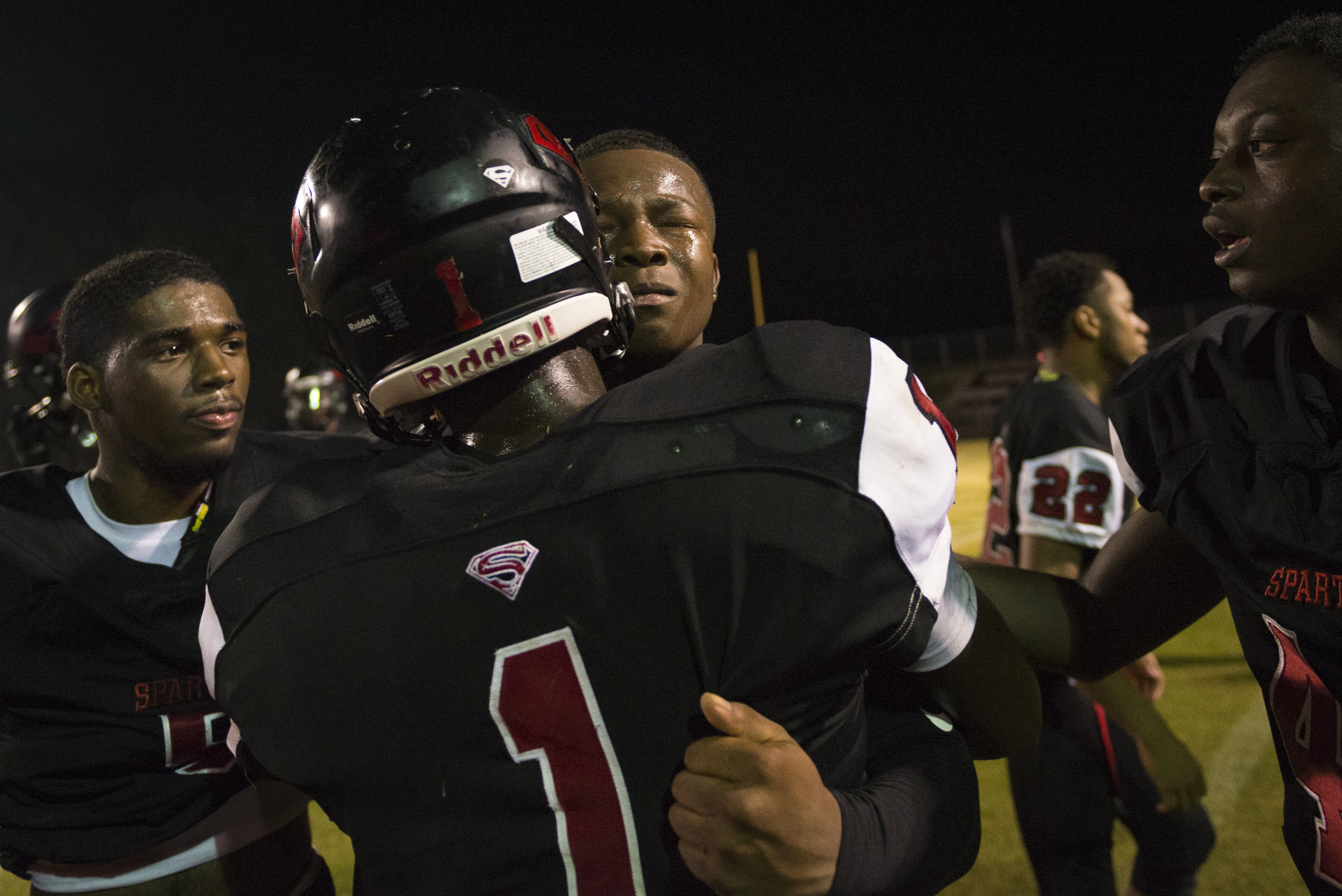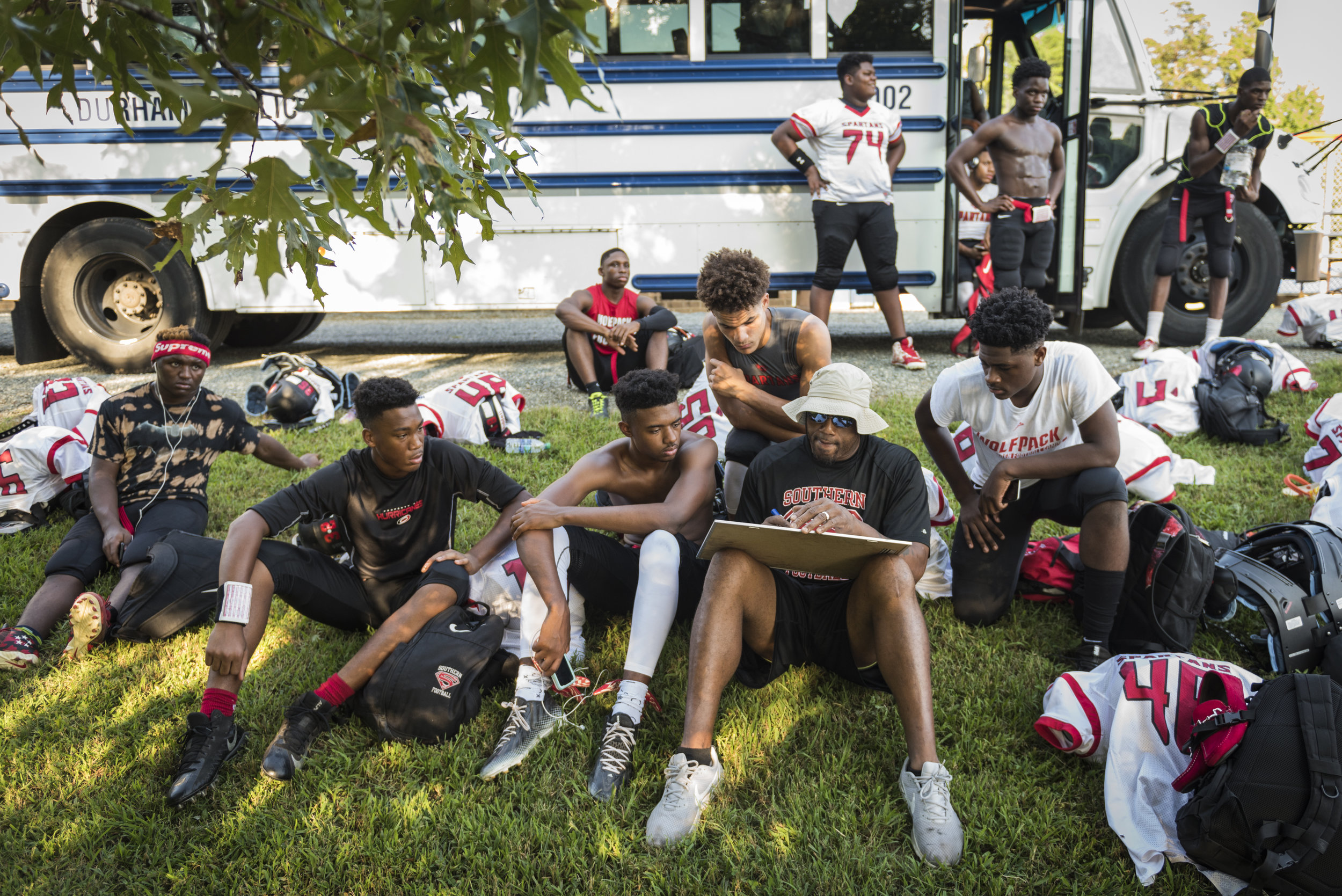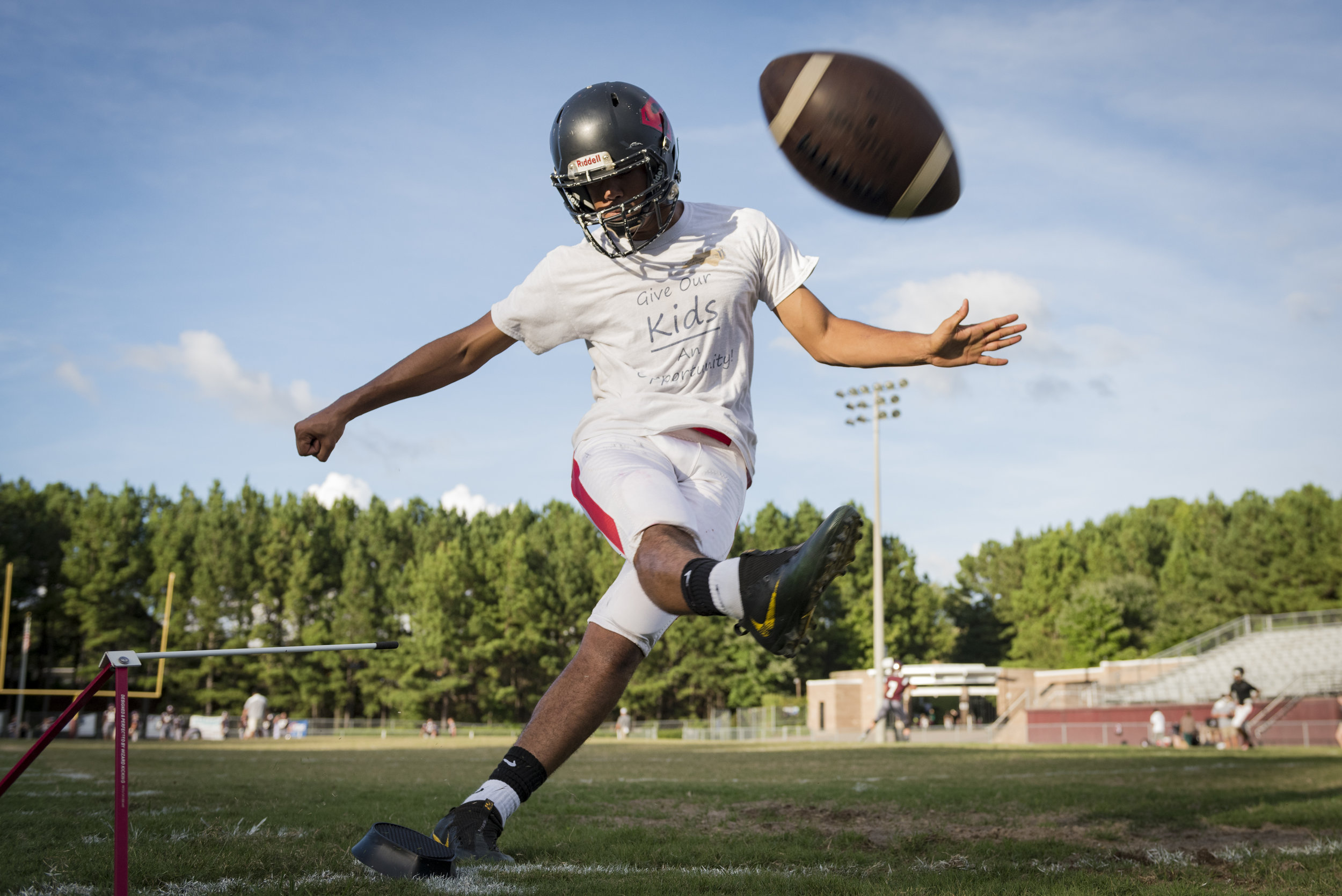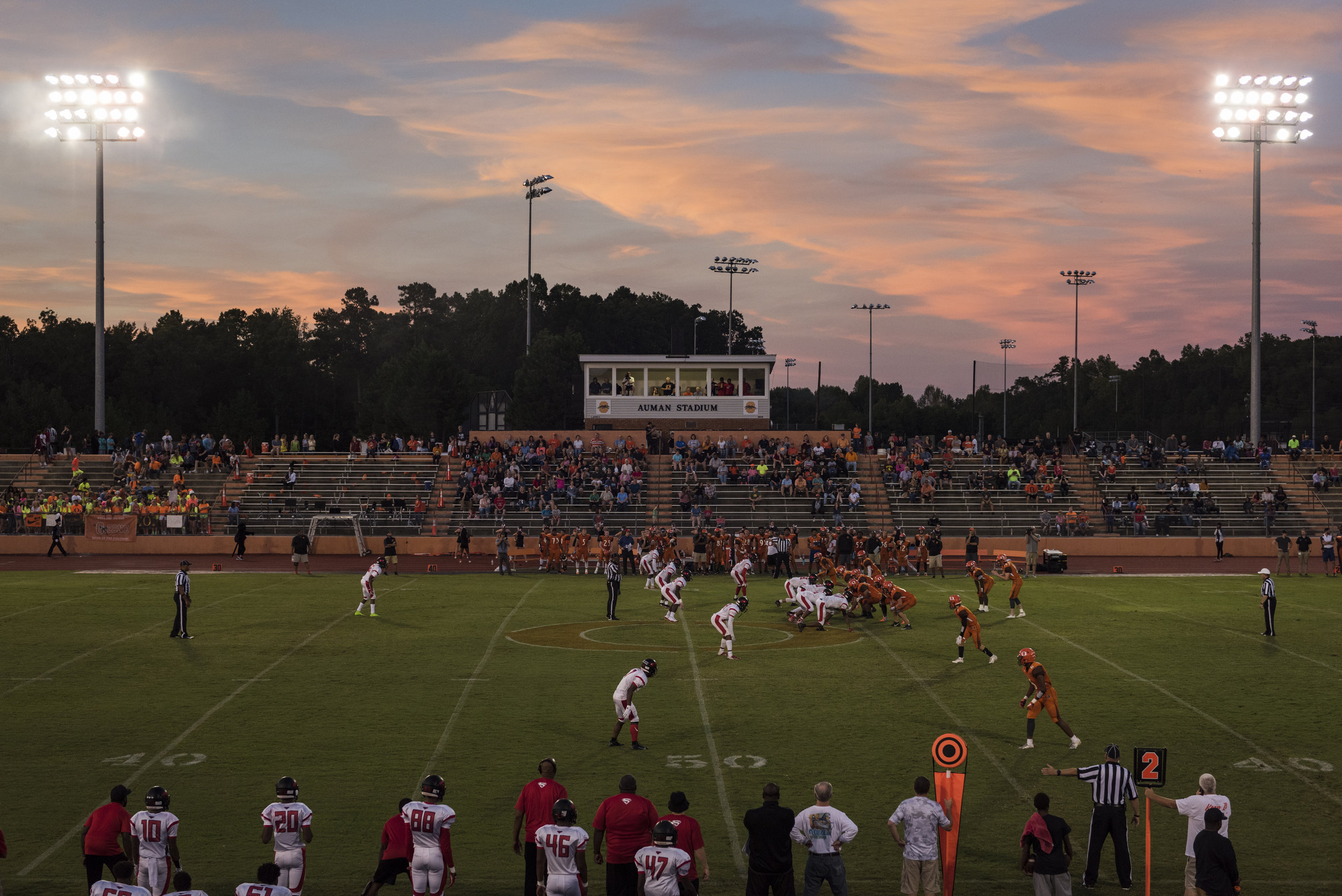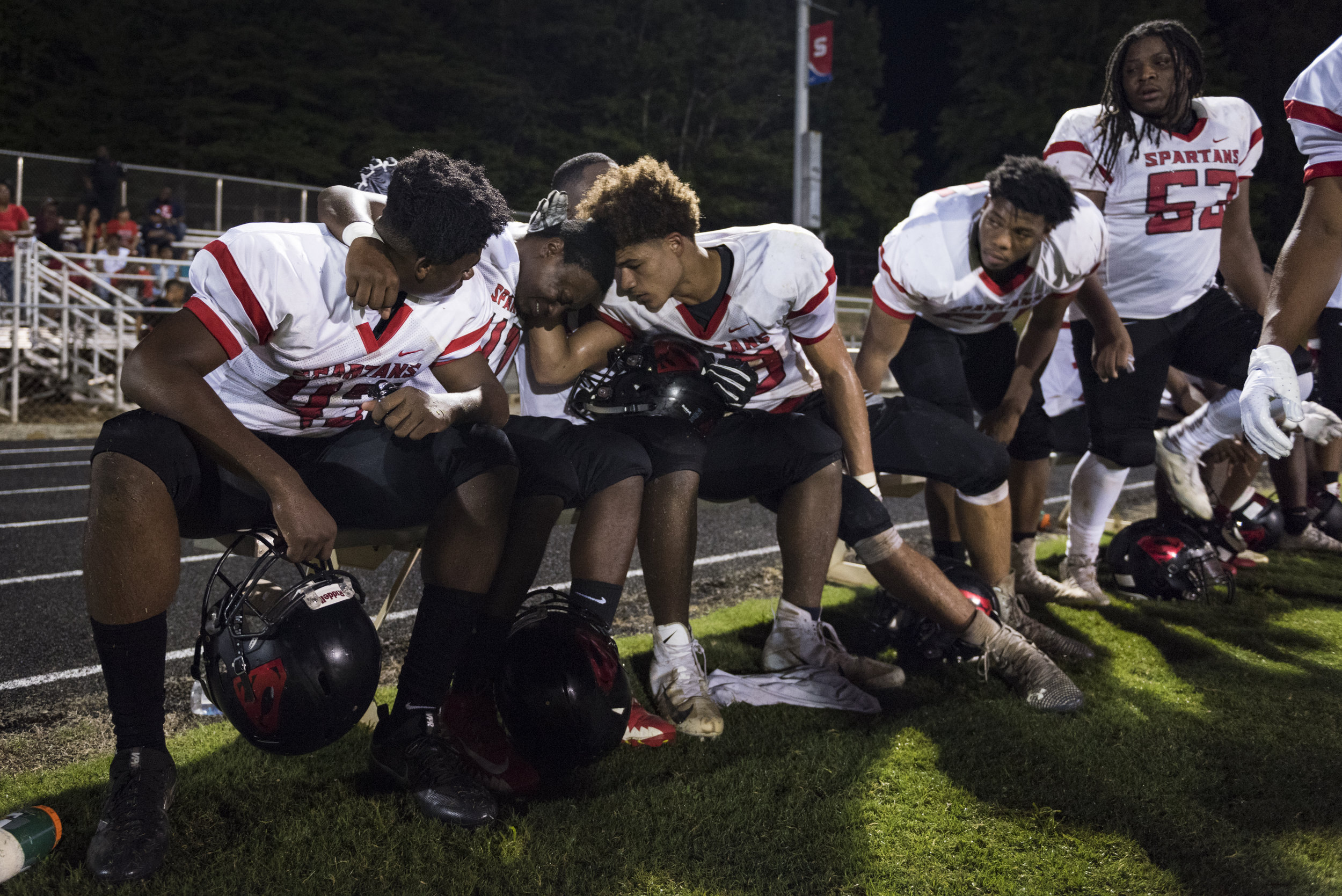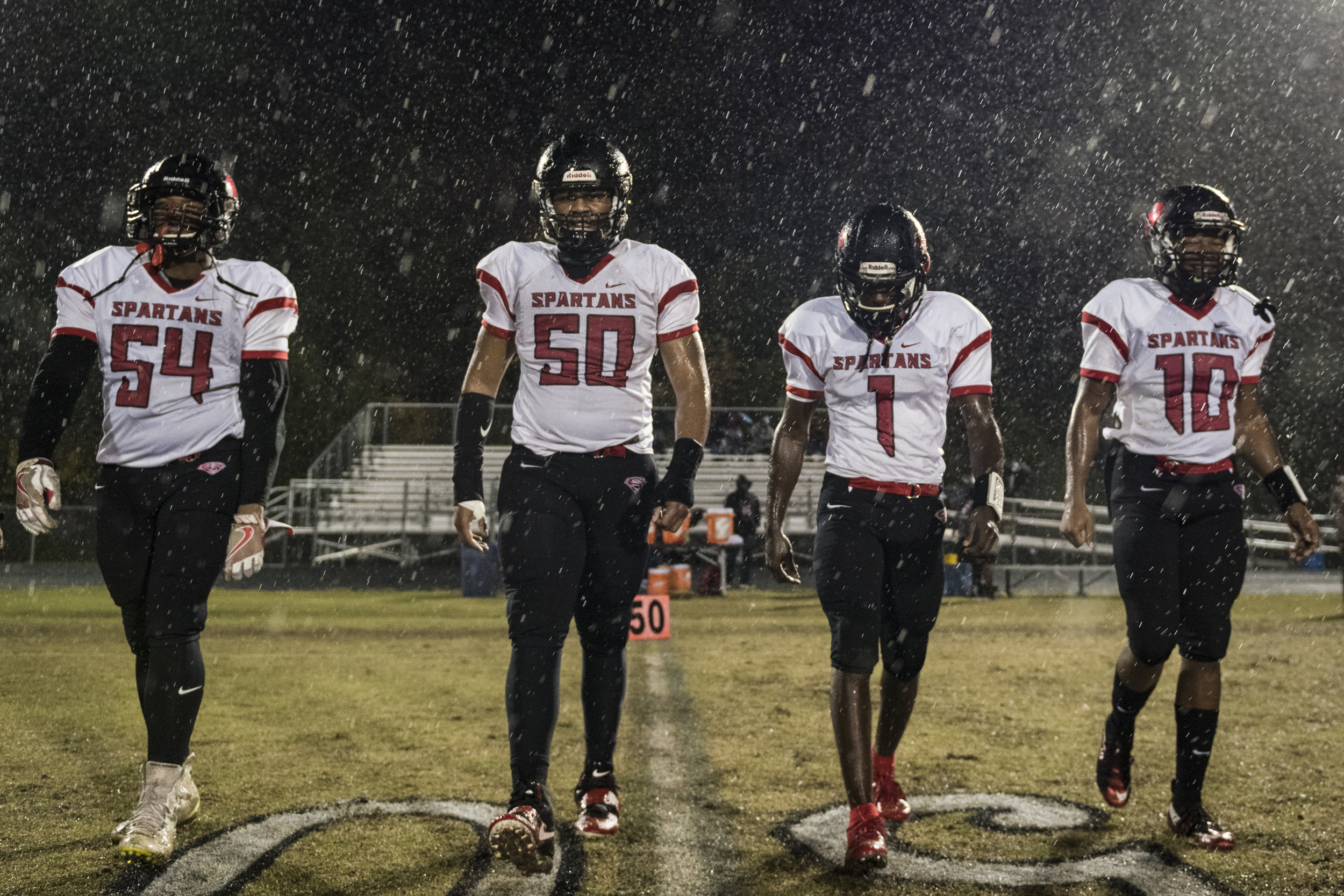Yesterday I shared a story that I worked on with the Southern Durham Football team. It was an in-depth look into their season. For four months, the team allowed me to be present at every moment. They trusted me - for which I will forever be grateful.
Southern Spartans head coach Darius Robinson celebrates with his players after winning the last game of the season against Millbrook High School, 21-14. On the first day that I met Head Coach Robinson, he took me to the team locker room and introduced me to his players: “this is Bryan, he will be photographing our season. He is now part of the family.”
How did this come about? As visual storytellers, how do we make this connection, gain this trust, and tell the story to the best of our abilities?
Though it varies by story, the one common factor is being human.
Let me explain.
My favorite quote throughout my time as a photojournalism student at Syracuse University says:
“We tell stories of people - not ‘subjects.’ Honor their humanity. Our language sets the tone.”
I think it’s very important to always keep this in mind because this is the level at which we connect with those whom we are fortunate to photograph. It is not a photographer-subject relationship but a human one. We gain trust by being genuine, listening, being present, and by truly caring about the story.
Telling these stories is a collaborative process. Explaining this is a good way of building these relationships. Don’t take control of a story that isn’t yours. You’re simply helping share this narrative with your storytelling ability. Ask the people you are photographing “what do you think your story is?” and be prepared for the answer. Chances are it might not be what you thought it was - it’s much more meaningful.
Be respectful and feel situations out. Go with your gut instinct. Sometimes the best move is to put your camera down and be present. This is still hard one for me too, because I don’t want to miss a frame. But when the situation calls for you to be present and you are, this goes along way in the trust you are building. Being present and asking questions is good way of making images - even though you are not pressing the shutter button - because you will be constantly learning about the person and the different layers to their story.
Once the story is complete, maintain that relationship. Whether that’s through social media, mail, text messages, etc. These are human beings that entrusted you, allowed you into their lives, and shared with you. Don’t take this for granted. Honor those relationships.
Even if you’re not a visual storyteller, I would challenge you to start thinking about the relationships you create and how you honor them. As I mentioned earlier in this post, we connect not as subjects-photographers but as humans. Meet new people, ask questions, listen, and most importantly, be genuine and care.
Care.
Listen.
Be Genuine.
Be Present.
Be Respectful.
Honor the Relationship.


